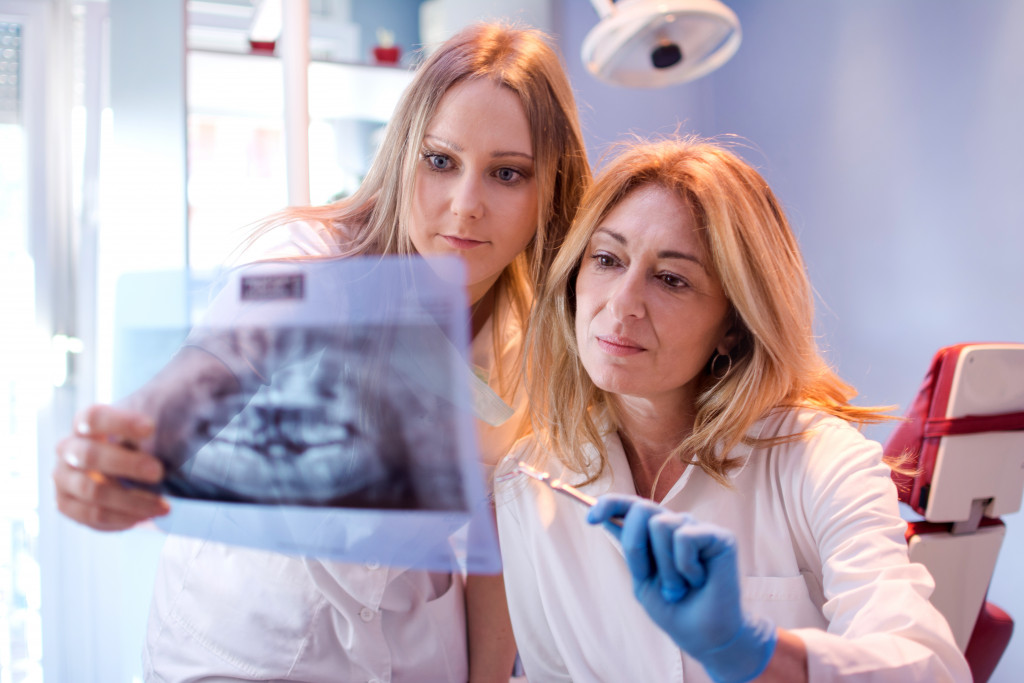Modern dentistry has come a long way from the days of metal fillings and uncomfortable tools. The advancements in dental technology have made it easier for patients to receive comfortable, safe, and effective treatments. Keeping up with the latest innovations can help dentists provide better care for their patients, and it can also increase efficiency in the office.
If you want to know more about the innovative and modern dental treatments available today, here’s an in-depth look at some of the newest industry trends revolutionizing dentistry as you know it.
Diagnostics and Imaging
An accurate diagnosis is one of the essential elements of effective dental care. Without proper diagnosis, it’s impossible to develop an appropriate treatment plan. So, dentists are turning to modern imaging technologies for a more detailed, comprehensive view of their patient’s tooth and gum structures.
In the past, X-rays were solely used to determine a patient’s oral health. But now, dentists can access advanced imaging technology such as digital x-rays and 3D cone beam scans. These tools allow dentists to look at the entire jaw, teeth, and surrounding structures, like the nerves. They can also help them diagnose problems such as cavities, fractures, and periodontal diseases quickly and accurately.
And as technology continues to evolve, dentists can expect even more advanced imaging tools to become available in the coming years. It’s definitely an exciting time for the dental industry.
Robotics
The use of robotics has become increasingly popular in the dental industry over the past few years. This technology can help dentists provide more precise treatments and improve the overall accuracy of their care.
Robotics allows dentists to perform patient-specific treatments, such as creating custom crowns and bridges. And it can also be used for more complex procedures like dental implants and cosmetic surgery. Plus, it can help reduce treatment times and make the process easier for patients.
Robotics is also making its way into dental hygiene. Now, robotic hygienists can clean teeth while simultaneously providing valuable data to dentists and hygienists. This technology can help identify problems before they become serious and ultimately lead to a better patient experience.
So, it’s clear that robotics has the potential to revolutionize the dental industry and make treatments more efficient and effective.
Chairside CAD/CAM
Computer-aided design (CAD) and computer-aided manufacturing (CAM) is becoming increasingly popular in the dental industry. This technology allows dentists to design and create custom restorations in-house quickly and accurately.
Chairside CAD/CAM technology streamlines the restoration process by eliminating the need to send impressions and models back and forth to a lab. This method reduces patient wait times and allows dentists to provide more affordable teeth replacement options. Moreover, it increases accuracy, reduces stress for the patient, and improves overall comfort levels during treatment.
By utilizing chairside CAD/CAM, dentists can create customized restorations such as crowns, bridges, and veneers quickly and accurately in-house. And compared to traditional methods, this technology boosts efficiency, improves patient satisfaction, and reduces treatment times.

Virtual Reality
Treatment planning with Virtual Reality (VR) is a relatively new concept in the dental industry. It’s an immersive technology that allows dentists to create custom treatment plans before they even start the procedure.
VR technology provides a 3D view of patients’ mouths and teeth, which helps dentists make more informed decisions and develop more accurate treatment plans. Plus, it can also be used to show patients what their results will look like before the procedure begins.
Overall, Virtual Reality technology is revolutionizing the way dentists diagnose and treat their patients. By offering a more in-depth view of patients’ mouths, dentists can provide more accurate and comprehensive treatment plans, resulting in better outcomes. It also allows for more confidence in the treatment process and improved patient satisfaction.
Data-driven Decision Making
Big data analytics is quickly becoming a vital part of the dental industry. This technology allows dentists to collect and analyze large amounts of data to make more informed treatment decisions.
Data-driven decision-making also helps dentists better understand their patients and how different treatments affect them. This information can then be used to develop customized treatment plans that meet the individual needs of each patient.
Furthermore, data-driven decision-making can help dentists identify trends in their practice and track patient outcomes. This information can then be used to improve the quality of care they provide and ensure they’re making the best decisions for their patients.
Many innovative practices and technologies are being used in the dental industry today. The above advances are just a few ways dentists can provide better, more effective patient care. Although some of the technology may seem intimidating at first, it can make a huge difference in patient outcomes and satisfaction.
So, if you’re looking for a more modern, streamlined approach to dental care, it may be worth considering the latest innovations in the industry. With these tools, dentists can provide more efficient and accurate treatments, helping patients achieve better oral health.


